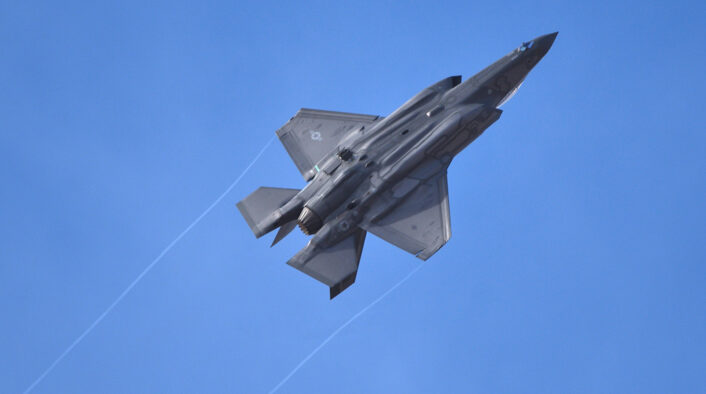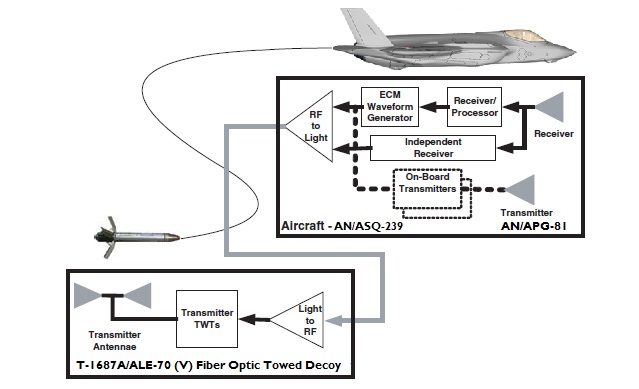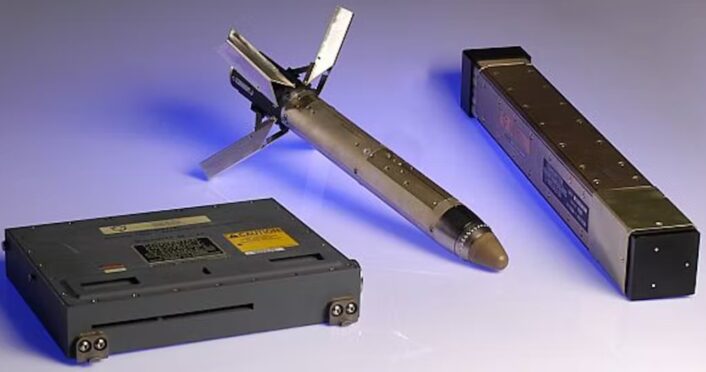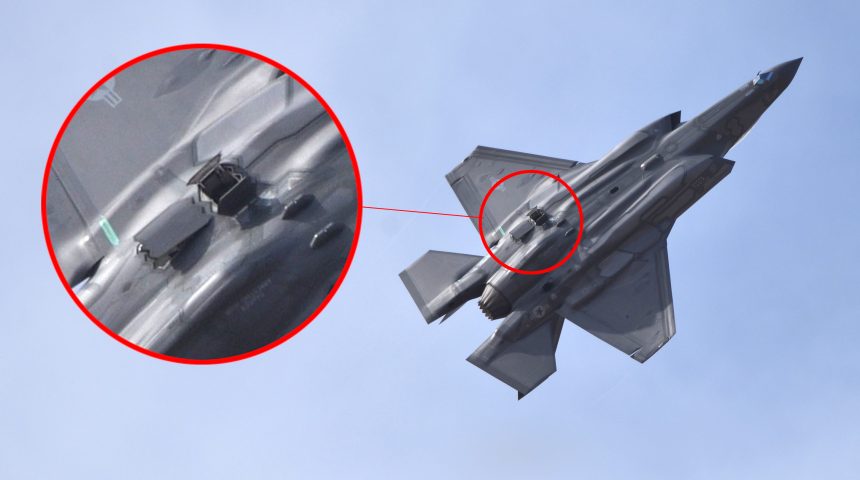The ALE-70 towed radio frequency countermeasure is stored under a hatch next to the dual infrared countermeasures dispenser doors, that appear to be open too.
The images in this post were taken last week at Luke Air Force Base, Arizona, by our friend Steve Fortson. They show an F-35A flying with both the ALE-70 and the flare dispenser doors open. Interestingly, it looks like the aircraft flew the mission in this quite unusual “configuration” and made multiple passes after returning to its homebase, as Steve observed.
Flares and towed decoy doors are usually closed to preserve the LO (Low Observability) of the aircraft, and are opened to deploy the countermeasures. For this reason, it’s not clear whether they were open for testing purposes or for another reason (possibly also a minor failure – it would not be the first time – we have seen F-35s flying with open panels as a consequence of a glitch).

While there are plenty of photographs showing the Lightning stealth jets releasing flares, there very few one showing the ALE-70 door open. The ALE-70 is a towed radio frequency countermeasure designed and produced by BAE Systems for the F-35. Both the A, B and C variant can carry the decoy. At the moment, besides the U.S. Air Force, Marine Corps and Navy, the only foreign operator is the Royal Australian Air Force.

Towed decoy systems are used to protect military aircraft from radar-guided missiles. These countermeasures are towed behind the host aircraft protecting it against both surface-to-air and air-to-air missiles. They provide a radiowave reflecting bait that attracts the RF-guided missiles away from the intended target. They are attached via a Fibre Optic link that is used to send commands to the decoy radio frequency emitter to produce jamming signals required to lure the missile away from the “parent aircraft”.
Many aircraft are equipped with such towed decoys. The U.S. F-18s and B-1s are equipped with the ALE-50 system, while the Eurofighter Typhoon is equipped with a Towed Radar Decoy carried in the starboard side wingtip pod.
The ALE-70 of the F-35 is stored internally and deployed, as explained, through a hatch that is aft of the flare dispenser and it is made of a reel and launcher assembly, tow line, T-1687 countermeasure transmitter, and electronic and mechanical subassemblies. It also has canisters, and explosive cartridges that are needed to deploy the decoys.

As explained, generally speaking, towed decoys are self-protection countermeasures, as they can be used to improve an aircraft’s survivability against air-to-air and anti-aircraft threats. ALE-70 is particularly useful for the F-35, considered that the Lightning is not equipped with chaffs (countermeasures used against radar-guided missiles). However, they can also be useful in a SEAD/DEAD scenario, where the decoy could be reeled out by an F-35 to simulate a big “false target” as a bait for enemy air defense systems while another F-35 in full stealth mode geo-locates the emitters and attacks them.

By the way, towed decoys are often called “first generation decoys”, as they were developed towards the end of the Cold War and rely on a cable that connects them to the aircraft so they can keep the required distance and also receive data and power for the jamming signal. Most modern ones, like BriteCloud battery powered, self-contained cartridge that provides an off-board jamming capability – hence the term “active” – that can be dropped like the classic chaffs and flares – hence the term “expendable” – creating a large distance between the aircraft and the decoy so the missile and its shrapnel miss completely the aircraft.









